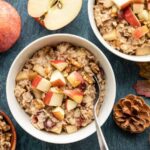Imagine a chilly evening, the aroma of warm, savory goodness filling your kitchen. That’s the promise of comforting nut-free casseroles – hearty, flavorful dishes perfect for those cozy nights in. This guide dives into the world of creating delicious, allergy-friendly casseroles, exploring a range of ingredients, dietary adaptations, and cooking techniques to help you craft the perfect dish for your next get-together or quiet night at home. We’ll journey from selecting the freshest vegetables and protein sources to mastering the art of achieving that perfectly browned, golden-brown top crust, ensuring a visually stunning and undeniably delicious culinary experience.
From vibrant vegetarian options bursting with fresh herbs and earthy vegetables to effortlessly adaptable gluten-free recipes, we’ll explore the versatility of nut-free casseroles. Learn how to layer flavors, build textures, and customize your casserole to suit every palate, ensuring a satisfying meal that’s both nourishing and delightful. Whether you’re a seasoned cook or a kitchen novice, this guide offers clear, step-by-step instructions and helpful tips to empower you to create memorable meals.
Popular Nut-Free Casserole Ingredients
Creating comforting and delicious nut-free casseroles requires careful ingredient selection to ensure both flavor and nutritional value. This section will explore popular vegetables, protein sources, and other key ingredients that contribute to satisfying and healthy nut-free casseroles.
Popular Vegetables for Nut-Free Casseroles
Vegetables form the vibrant base of many casseroles, contributing both texture and essential nutrients. Choosing a variety ensures a balanced and flavorful dish.
- Broccoli: This cruciferous vegetable is packed with vitamins C and K, fiber, and antioxidants. Its firm texture holds up well in casseroles, offering a satisfying bite.
- Carrots: Sweet and subtly earthy, carrots provide beta-carotene (converted to vitamin A), which is crucial for eye health and immune function. Their tender texture softens beautifully during baking.
- Sweet Potatoes: Naturally sweet and creamy, sweet potatoes offer a good source of vitamin A, vitamin C, and fiber. Their soft texture adds a luxurious feel to the casserole.
- Green Beans: These slender legumes are rich in vitamins K and C, and fiber. Their crisp-tender texture provides a nice contrast to softer ingredients.
- Peas: Sweet and vibrant, peas are a fantastic source of vitamin K, folate, and fiber. Their delicate texture adds a touch of freshness to the casserole.
Nut-Free Protein Sources for Casseroles
Protein is essential for a complete and satisfying meal. These options offer diverse flavor profiles and textures to complement the other ingredients.
- Lentils: Earthy and slightly sweet, lentils add a hearty texture and a substantial protein boost to casseroles. They can be easily incorporated into the base or as a topping.
- Chickpeas: Creamy and subtly nutty (despite being nut-free!), chickpeas provide a good source of protein and fiber. Their texture holds up well in baking, offering a satisfying bite.
- Quinoa: A complete protein, quinoa offers a fluffy texture and a mild, slightly nutty flavor that blends well with various vegetables and spices. It can be used as a base or added as a component.
Diverse Nut-Free Casserole Ingredients
A variety of ingredients contributes to a well-rounded casserole experience, both in terms of flavor and nutrition.
| Ingredient | Flavor Profile | Texture | Nutritional Highlight |
|---|---|---|---|
| Broccoli | Slightly bitter, vegetal | Firm, crisp-tender | Vitamins C & K, fiber |
| Sweet Potato | Sweet, earthy | Soft, creamy | Vitamin A, fiber |
| Chickpeas | Subtly nutty, earthy | Firm, creamy | Protein, fiber |
| Lentils | Earthy, slightly sweet | Tender, hearty | Protein, fiber, iron |
| Quinoa | Mildly nutty | Fluffy, slightly chewy | Complete protein, fiber |
| Carrots | Sweet, slightly earthy | Tender | Beta-carotene (Vitamin A) |
| Green Beans | Slightly vegetal | Crisp-tender | Vitamins K & C, fiber |
| Peas | Sweet, vegetal | Tender | Vitamin K, folate, fiber |
| Tomatoes | Bright, acidic, sweet | Juicy, soft | Lycopene, Vitamin C |
| Corn | Sweet, vegetal | Tender, slightly crunchy | Fiber |
Presentation and Serving Suggestions

Elevating a comforting nut-free casserole from a simple weeknight meal to a visually stunning and flavorful experience involves thoughtful presentation and creative serving suggestions. The right presentation can significantly enhance the perceived value and enjoyment of the dish, transforming a humble casserole into a culinary centerpiece.
The visual appeal of a casserole can be dramatically improved through strategic garnishing and thoughtful plating. Consider these options to transform your creation from simple to spectacular.
Visually Appealing Presentation Methods
Three visually appealing ways to present a nut-free casserole involve focusing on contrasting colors, textures, and heights to create a dynamic and appetizing dish. Imagine the rich, warm tones of the casserole itself being beautifully complemented by vibrant and fresh elements.
First, consider a vibrant green herb garnish. A scattering of freshly chopped parsley, chives, or a delicate dill sprig adds a pop of color and a fragrant aroma, contrasting beautifully against the casserole’s typically earthy tones. Imagine the bright green herbs scattered artfully across the golden-brown surface of the casserole, creating a visually appealing contrast.
Secondly, a sprinkle of toasted breadcrumbs or panko adds texture and a subtle crunch, offering a delightful contrast to the casserole’s creamy or soft interior. Picture the light, golden-brown breadcrumbs, crisply toasted, scattered across the casserole’s surface, adding visual interest and textural complexity. This simple addition elevates the presentation significantly.
Thirdly, for a more sophisticated presentation, consider a drizzle of a flavorful sauce or reduction. A balsamic glaze, a creamy white sauce, or even a simple olive oil drizzle adds visual appeal and enhances the flavor profile. Imagine a thin, glossy stream of balsamic glaze artistically drizzled across the casserole, creating elegant swirls and adding a touch of sweetness and acidity to the dish. The contrast in color and shine creates a captivating visual effect.
Creative Serving Suggestions
Beyond the visual aspects, innovative serving suggestions can elevate the overall dining experience. These suggestions focus on complementing the casserole’s flavors and textures, creating a harmonious culinary journey.
Serving the casserole in individual ramekins transforms the dish into a more elegant and personal experience. Each portion is presented beautifully, offering a sense of occasion. The warm, comforting casserole nestled within the individual ramekins creates a cozy and intimate atmosphere, perfect for a quiet evening at home. The individual portions are also easier to manage and serve.
Another creative serving suggestion involves accompanying the casserole with a contrasting side dish, such as a crisp green salad or a vibrant roasted vegetable medley. The contrast in textures and flavors – the soft, creamy casserole juxtaposed against the crisp, fresh salad – creates a balanced and satisfying meal. Imagine the vibrant colors of the salad complementing the warm tones of the casserole, creating a visually appealing and delicious combination.
Ideal Ambiance for Enjoying a Nut-Free Casserole
The ideal ambiance for enjoying a comforting nut-free casserole on a cozy evening is one that engages all the senses. Imagine the soft glow of candlelight illuminating a warmly lit room, the gentle crackling of a fireplace adding a soothing auditory backdrop, and the comforting aroma of the casserole filling the air. The soft textures of a plush blanket and the gentle touch of a warm mug of tea or hot chocolate further enhance the sensory experience, creating a haven of relaxation and contentment. The overall atmosphere is one of warmth, comfort, and tranquility, perfectly complementing the rich flavors and textures of the casserole.
Recipe Adaptation and Customization
Nut-free casseroles offer a fantastic base for culinary creativity. Their adaptability allows for seamless adjustments to suit diverse tastes and dietary needs, transforming a simple recipe into a personalized culinary masterpiece. By understanding a few key techniques, you can easily tailor a basic nut-free casserole to your preferences and available ingredients.
Adjusting Spice Level and Flavor Profile
Modifying the spice level and flavor profile of a nut-free casserole is straightforward. For a milder dish, simply reduce the amount of chili powder, cayenne pepper, or other spicy ingredients. Conversely, to create a spicier casserole, gradually increase these ingredients, tasting as you go to avoid overwhelming heat. Remember to balance spices; a touch of sweetness from maple syrup or a squeeze of lemon juice can complement spiciness beautifully. Experimenting with different herbs and spices is another avenue for flavor customization. For example, substituting oregano for basil will create a distinctly different Mediterranean flavor profile, while adding smoked paprika will lend a smoky depth. A dash of Worcestershire sauce adds umami, while a pinch of nutmeg provides warmth. Consider the overall flavor profile you desire—savory, sweet, tangy, or a combination—and select ingredients accordingly. Start with small adjustments and taste frequently to fine-tune the flavor to your liking.
Incorporating Leftover Cooked Vegetables or Proteins
Leftover cooked vegetables and proteins are perfect additions to a nut-free casserole, reducing food waste and adding nutritional value. Imagine a hearty casserole incorporating leftover roasted sweet potatoes and butternut squash, lending a vibrant sweetness and rich texture. Similarly, shredded leftover chicken or chickpeas can boost the protein content and add satisfying substance. Before adding leftovers, ensure they are well-drained to prevent a watery casserole. Consider chopping larger pieces into smaller, more evenly distributed sizes for optimal texture. For example, diced leftover chicken breast blends seamlessly into a creamy tomato-based casserole, while roasted vegetables add bursts of color and flavor. The possibilities are endless; leftover roasted broccoli, steamed green beans, or even cooked quinoa can be incorporated to enhance the nutritional profile and texture. Always taste-test before adding the final seasoning, as the leftover ingredients might subtly alter the overall flavor balance.
Exploring Different Cooking Methods
While oven baking is the traditional method for casseroles, alternative cooking methods such as slow cookers and Instant Pots offer unique advantages. A slow cooker yields a wonderfully tender casserole, perfect for tough cuts of meat or vegetables that benefit from long, slow cooking. The low and slow cooking process creates deeply infused flavors. For example, a slow-cooked lentil casserole will develop a rich, earthy flavor that’s impossible to replicate in a shorter cooking time. The step-by-step process would involve layering ingredients in the slow cooker (lentils, vegetables, broth, spices), cooking on low for 6-8 hours, then stirring in any final additions like herbs or cheese before serving.
Conversely, an Instant Pot allows for faster cooking times, ideal for weeknight meals. Pressure cooking creates a tender and flavorful casserole in a fraction of the time compared to oven baking. However, the intense heat can sometimes lead to a slightly mushier texture in some vegetables. For instance, a quick and easy Instant Pot vegetable casserole could be made by sautéing vegetables, then pressure cooking them with broth and seasonings for a short period, followed by a quick natural pressure release. The final result will be a flavorful and tender casserole ready in under an hour. Choosing the appropriate cooking method depends on the ingredients, desired texture, and available time.
Crafting comforting nut-free casseroles isn’t just about following a recipe; it’s about creating a warm, inviting experience. From the careful selection of ingredients to the artful presentation, each step contributes to a final dish that’s as visually appealing as it is delicious. The journey from raw ingredients to a bubbling, golden-brown casserole is a rewarding one, culminating in a meal that nourishes the body and soul. So gather your ingredients, embrace the cozy atmosphere, and enjoy the satisfying process of creating a truly memorable nut-free casserole.
Question & Answer Hub
Can I make a nut-free casserole ahead of time?
Yes! Many nut-free casseroles taste even better the next day. Assemble the casserole a day in advance and bake it when ready to serve, or bake it completely and reheat gently before serving.
What are some good substitutes for cream of mushroom soup in a nut-free casserole?
You can substitute cream of mushroom soup with homemade cashew cream (for those not avoiding nuts), a creamy white sauce made from butter, flour, and milk, or even pureed vegetables like cauliflower or potatoes for a lighter option.
How can I prevent my casserole from becoming dry?
Ensure your vegetables are not overcooked, use enough liquid in your recipe, and consider adding a layer of cheese or breadcrumbs on top to retain moisture during baking. Covering the casserole loosely with foil during part of the baking process can also help.
Can I freeze nut-free casseroles?
Yes, many nut-free casseroles freeze well. Allow them to cool completely before freezing in airtight containers. Reheat thoroughly before serving.


